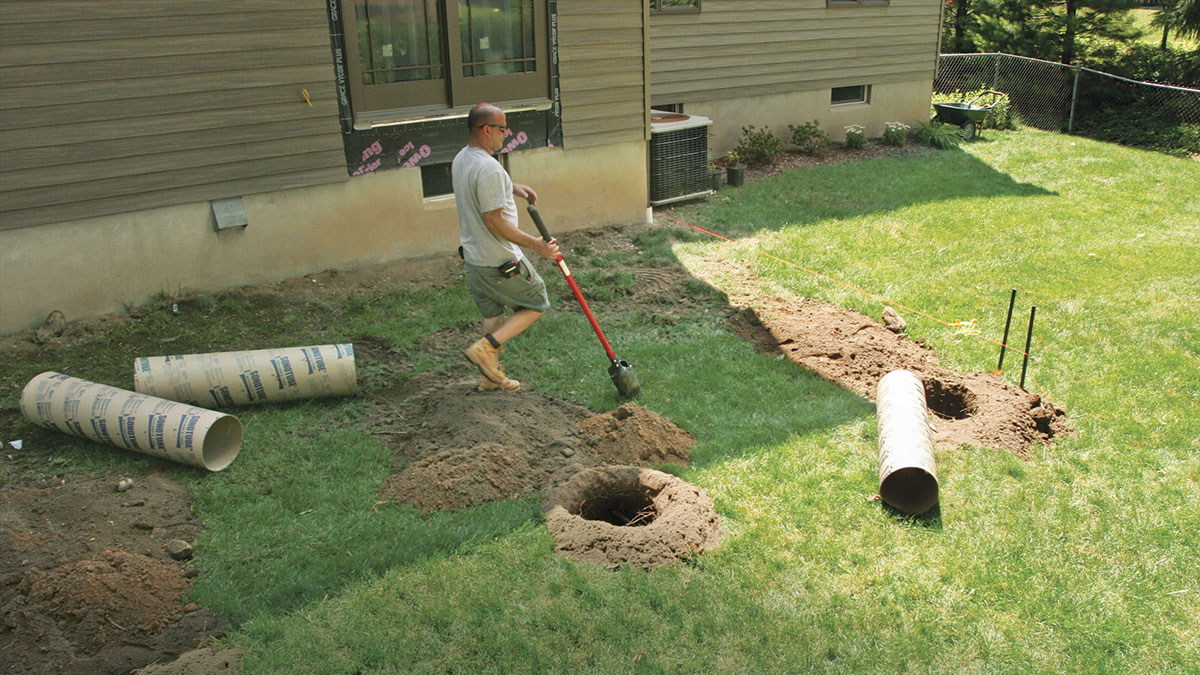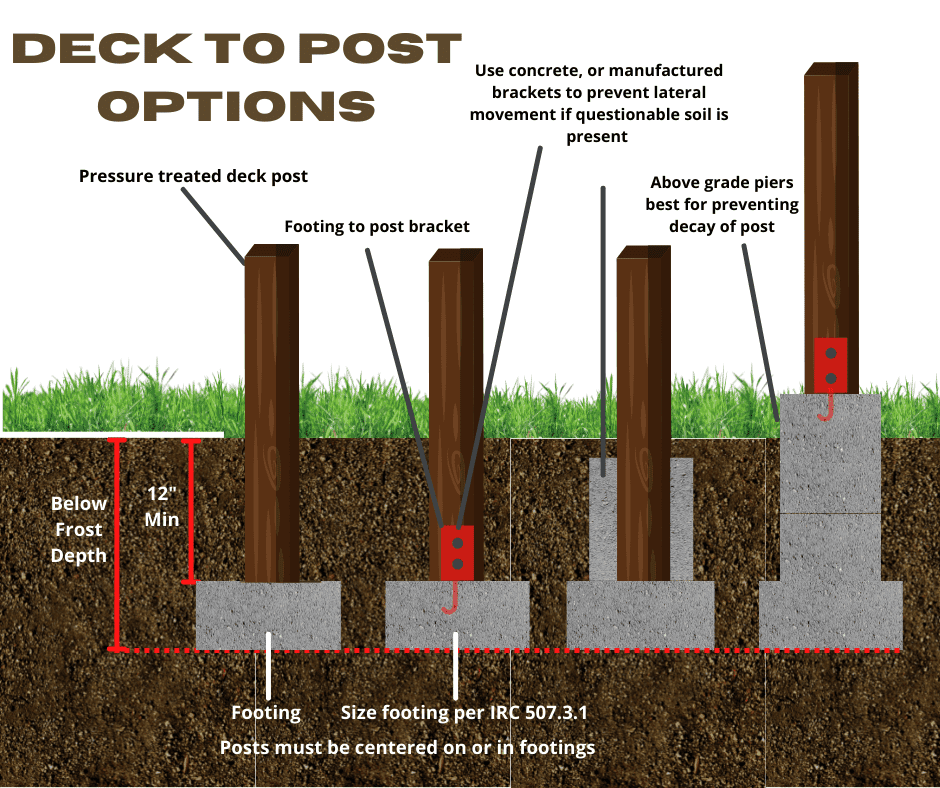Deck Footings Demystified: Your Blueprint for a Safe, Lasting Outdoor Sanctuary
Guarantee Stability and Longevity With Correctly Mounted Deck Grounds
Deck grounds may not be the most extravagant aspect of deck building and construction, but they play an important duty in making certain security and durability. Properly installed footings supply a solid foundation for your deck, preventing usual concerns like sagging, moving, and even collapse. Nonetheless, picking the right sort of ground and correctly installing it can be a complicated process. In this discussion, we will certainly discover the importance of proper deck footings, variables to think about throughout installment, various types of footings readily available, step-by-step setup overview, and upkeep ideas for guaranteeing long-lasting footings. So, if you desire to make certain the stability and long life of your deck, keep reading to find the crucial understandings to accomplish a resilient and structurally sound exterior space.

Importance of Appropriate Deck Grounds
Why are effectively set up deck grounds essential for the security and long life of your deck? Deck footings are the foundation on which the deck relaxes, moving the load from the deck to the ground.
Firstly, appropriately set up deck footings distribute the weight of the deck evenly, avoiding any kind of irregular settling or sinking. This is especially important in areas with unpredictable dirt, as it aids to minimize the risk of the deck collapsing or changing. In addition, well-installed grounds make sure that the deck continues to be degree, stopping any type of structural damage that can happen when a deck comes to be uneven.
Second of all, properly installed grounds offer a strong support for the deck, avoiding extreme motion and persuade. This aids to maintain the structural integrity of the deck, decreasing the danger of mishaps or injuries. It likewise reduces the wear and tear on the deck, enabling it to stand up to the components and regular use for a longer amount of time.
Variables to Take Into Consideration for Deck Footing Installment
When installing deck grounds, there are several essential factors to consider for proper setup. Different dirt kinds have different load-bearing capabilities, so it is crucial to carry out a dirt test to make certain the grounds can support the weight of the deck and its owners. By taking right into account these factors, you can ensure the appropriate installment of deck footings and delight in a stable and durable deck.
Sorts Of Deck Grounds to Select From
There are several different types of deck footings available for you to select from. Each type has its own advantages and negative aspects, so it's important to consider your particular requirements and the conditions of your deck before deciding.
One typical kind of deck footing is the concrete footing. This includes digging holes in the ground and putting concrete into them to produce a strong structure. Concrete grounds are resilient and offer superb security, making them suitable for decks in locations with difficult dirt conditions or high wind tons.
One more option is the helical pier ground, which includes a steel shaft with helical plates that are screwed right into the ground. These grounds fast to install and can be used in different dirt types, consisting of sandy or clay dirts. They are additionally flexible, permitting simple progressing of the deck.
Sonotube grounds are one more prominent option. These grounds are produced by positioning a cardboard tube in an opening and filling it with concrete. Sonotube footings are fairly simple to mount and give sufficient stability for smaller decks or in areas with much less demanding dirt conditions.

When picking the kind of deck ground, it's essential to consider factors such as dirt problems, deck dimension and weight, regional building ordinance, and personal preferences. By choosing the ideal ground kind, you can ensure the stability and durability of your deck.
Step-by-Step Guide for Setting Up Deck Footings

Determine the place: Begin by marking the precise placement of each footing utilizing stakes and string (Deck Footings). Take right into check that account any kind of local building regulations or laws concerning problem distances
Dig the openings: Utilize a message opening digger or an auger to dig the openings for the grounds. Generally, a depth of at the very least 36 inches is recommended for security.
Degree the holes: Ensure that the bottoms of the openings are degree (Deck Footings). This can be achieved by utilizing a degree or a straight board across the top of the openings
Add crushed rock: Place a layer of gravel at the end of each opening to enhance water drainage and avoid the ground from penetrating the dirt in time.
Place the ground forms: Insert the ground forms right into the openings, ensuring they are centered and level. Use stakes to protect them in location.
Mix and pour concrete: Comply with the directions on the concrete mix bag to prepare the concrete. Put the concrete right into the footing types, loading them entirely.
Smooth the surface: Use a trowel to smooth the surface of the concrete and get rid of any kind of air pockets. Enable the concrete to heal according to the supplier's instructions.
Maintenance Tips for Resilient Deck Footings
Correct upkeep is vital for making certain the durability and security of deck grounds. By regularly inspecting and preserving your deck footings, you can avoid damage and prospective safety dangers.
Routine cleansing is additionally necessary for preserving deck grounds. Particles, vegetation, and dust can collect around the footings, which can cause moisture accumulation and decay. Cleaning up the grounds regularly, look here using a stress or a brush washing machine, can assist avoid these problems and prolong the life-span of your deck.
Along with cleaning, it is necessary to keep the area around the footings clear of any obstructions. Prevent piling products versus the footings or permitting plants to expand as well near them. These obstructions can trap wetness and trigger the footings to degrade gradually.
Lastly, normal resealing of the grounds is suggested to safeguard them from moisture and various other ecological elements. Using a water resistant sealant can help avoid water damage and expand the life expectancy of the footings.
Conclusion
Finally, appropriate installment of deck footings is crucial for ensuring stability and durability of your deck. Aspects such as dirt type, load capability, and neighborhood structure codes need to be taken into consideration when picking the ideal kind of deck footings. Adhering to a detailed overview for setup and normal maintenance will certainly aid to make sure the grounds continue to be long-lasting and long lasting.
In this conversation, we will certainly explore the importance of appropriate deck footings, variables to think about throughout installment, various types of footings available, step-by-step installment overview, and maintenance suggestions for ensuring resilient grounds. Deck grounds are the foundation on which the deck rests, transferring the lots from the deck to the ground.One typical kind of deck ground is the concrete ground. Place the footing types: Place the ground creates into the holes, Click This Link guaranteeing they are focused and degree.In verdict, correct setup of deck footings is important for making sure stability and long life of your deck.